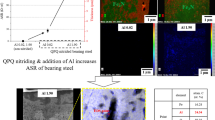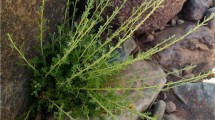Abstract
Lignin is a typical biological macromolecule with a three-dimensional network structure and abundant functional groups. It has excellent ionic complexation ability and amphiphilic molecular structure characteristics. In this study, the carbon steel anticorrosion performance of sodium lignosulfonate (SLS) in an acid solution was evaluated using the weight loss method, electrochemical measurements, scanning vibration electrode technique (SVET), and surface characterization methods. SLS exhibited excellent corrosion inhibition efficiency for Q235 carbon steel in 1 mol·L-1 HCl, reaching a maximum value of 98%. A low SLS concentration of 20 mg·L-1 resulted in the maximum corrosion inhibition efficiency, which remained nearly constant at higher SLS concentrations. The SVET test demonstrated that the formation of an SLS adsorption film can impede corrosion. This study confirms the significance of the application of green biomass resources in the field of metal corrosion protection and green functional materials.
Graphical abstract

摘要
木质素是一种具有三维网络结构和大量官能团的天然高分子, 具有优异的离子络合能力和两亲性分子结构特性。本研究中使用失重法、电化学测量、扫描振动电极技术 (SVET) 和表面表征方法研究了木质素磺酸钠 (SLS) 在酸溶液中对碳钢的防腐性能。结果显示, SLS对Q235碳钢在1 mol·L‒1 的HCl溶液中表现出优异的缓蚀效果, 最高可达98%。20 mg·L‒1的低SLS浓度具有最大的腐蚀抑制效率, 在较高的SLS浓度下其效率几乎保持不变。SVET测试表明SLS吸附膜的形成可以阻止金属腐蚀。研究结果表明木质素具有优异的缓蚀性能。这对其在金属防腐和绿色功能材料领域的高值利用具有重要意义。







Similar content being viewed by others
References
Lyon S. A natural solution to corrosion. Nature. 2004;427(6973):406. https://doi.org/10.1038/427406a.
Wu B, Chen B, Wang CW, Jiao JY, Zhou QC, Zhou TT. Corrosion behavior of a novel Mg-13Li-X alloy with different grain sizes by rapid solidification rate. Rare Met. 2022;41(9):3197. https://doi.org/10.1007/s12598-015-0601-7.
Li XG, Zhang D, Liu ZY, Li Z, Du CW, Dong CF. Materials science: share corrosion data. Nature. 2015;527(7579):441. https://doi.org/10.1038/527441a.
Cui WF, Dong YY, Bao YC, Qin GW. Improved corrosion resistance of dental Ti50Zr alloy with (TiZr)N coating in fluoridated acidic artificial saliva. Rare Met. 2021;40(10):2927. https://doi.org/10.1007/s12598-020-01668-y.
Liao BK, Cen HY, Chen ZY, Guo XP. Corrosion behavior of Sn-3.0Ag-0.5Cu alloy under chlorine-containing thin electrolyte layers. Corros Sci. 2018;143:347. https://doi.org/10.1016/j.corsci.2018.08.041.
Wang YF, Liu CM, Wang YF, Geng JJ. High temperature corrosion resistance of Cr coating on surface of zirconium alloy cladding. Chin J Rare Metals. 2022;46(8):1013.
Cui S, Zhai HM, Li WS, Tong W, Li XS, Cai AH, Fan XJ, Li XQ. Xiong Superhydrophobic Fe-based amorphous coating fabricated bydetonation spraying with excellent anti-corrosion and selfcleaningproperties. Rare Met. 2022;196(2):1. https://doi.org/10.1007/s12598-022-02130-x.
Hasanin MS, Al Kiey SA. Environmentally benign corrosion inhibitors based on cellulose niacin nano-composite for corrosion of copper in sodium chloride solutions. Int J Biol Macromol. 2020;161:345. https://doi.org/10.1016/j.ijbiomac.2020.06.040.
Chauhan DS, Mazumder MAJ, Quraishi MA, Ansari KR, Suleiman RK. Microwave-assisted synthesis of a new Piperonal-Chitosan Schiff base as a bio-inspired corrosion inhibitor for oil-well acidizing. Int J Biol Macromol. 2020;158:231. https://doi.org/10.1016/j.ijbiomac.2020.04.195.
Qiu YM, Tu XH, Lu XP, Yang JJ. A novel insight into synergistic corrosion inhibition of fluoride and DL-malate as a green hybrid inhibitor for magnesium alloy. Corros Sci. 2022;199:110177. https://doi.org/10.1016/j.corsci.2022.110177.
Cheng X, Xia J, Wu RJ, Jin WL, Pan CG. Optimisation of sacrificial anode cathodic protection system in chloride-contaminated reinforced concrete structure. Build Eng. 2022;45:103515. https://doi.org/10.1016/j.jobe.2021.103515.
Xu LK, Xin YL, Ma L, Zhang HB, Lin ZF, Li XB. Challenges and solutions of cathodic protection for marine ships. Corrosion. 2021;2:33. https://doi.org/10.1016/j.corcom.2021.08.003.
Hu QQ, Chai L, Liang K, Jiang YX, Yang G, Zhang LB, Yin LJ, Wang X, Liu T, Lu HP, Deng LJ. Effective corrosion protection of magnetic microwave absorber with designed macromolecular network barrier. Rare Met. 2023;42(2):558. https://doi.org/10.1007/s12598-022-02141-8.
Liu H, Fan B, Fan G, Ma Y, Hao H, Zhang W. Anti-corrosive mechanism of poly (N-ethylaniline)/sodium silicate electrochemical composites for copper: correlated experimental and in-silico studies. J Mater Sci Technol. 2021;72:202. https://doi.org/10.1016/j.jmst.2020.08.064.
Fan B, Zhao X, Liu Z, Xiang Y, Zheng X. Inter-component synergetic corrosion inhibition mechanism of Passiflora edulia Sims shell extract for mild steel in pickling solution: experimental, DFT and reactive dynamics investigations. Sustain Chem Pharm. 2022;29:100821. https://doi.org/10.1016/j.scp.2022.100821.
Nezhad AHN, Davoodi A, Zahrani EM, Arefinia R, Technology C. The effects of an inorganic corrosion inhibitor on the electrochemical behavior of superhydrophobic micro-nano structured Ni films in 3.5% NaCl solution. Surf Coat Tech. 2020;395:125946. https://doi.org/10.1016/j.surfcoat.2020.125946.
Hu JY, Xiong Q, Chen LJ, Zhang CF, Zheng Z, Geng S, Yang Z, Zhong XK. Corrosion inhibitor in CO2–O2-containing environment: inhibition effect and mechanisms of bis (2-ehylhexyl) phosphate for the corrosion of carbon steel. Corros Sci. 2021;179:109173. https://doi.org/10.1016/j.corsci.2020.109173.
Wan S, Wang H, Liu JH, Liao BK, Guo XP. Self-assembled monolayers for electrochemical migration protection of low-temperature sintered nano-Ag paste. Rare Met. 2022;41(4):1239. https://doi.org/10.1007/s12598-021-01866-2.
Liao BK, Luo Z, Wan S, Chen L. Insight into the anti-corrosion performance of Acanthopanax senticosus leaf extract as eco-friendly corrosion inhibitor for carbon steel in acidic medium. J Ind Eng Chem. 2023;117:1239. https://doi.org/10.1016/j.jiec.2022.10.010.
Zhang QH, Hou BS, Li YY, Zhu GY, Liu HF, Zhang GA. Effective corrosion inhibition of mild steel by eco-friendly thiourea functionalized glucosamine derivatives in acidic solution. J Colloid Interface Sci. 2021;585:355. https://doi.org/10.1016/j.jcis.2020.11.073.
Chaubey N, Qurashi A, Chauhan DS, Quraishi MA. Frontiers and advances in green and sustainable inhibitors for corrosion applications: a critical review. J Mol Liq. 2021;321:114385. https://doi.org/10.1016/j.molliq.2020.114385.
Zeng YX, Kang L, Wu Y, Wan S, Liao BK, Li N, Guo XP. Melamine modified carbon dots as high effective corrosion inhibitor for Q235 carbon steel in neutral 3.5 wt% NaCl solution. J Mol Liq. 2022;349:118108. https://doi.org/10.1016/j.molliq.2021.118108.
Umoren SA, Solomon MM, Obot IB, Suleiman RK. A critical review on the recent studies on plant biomaterials as corrosion inhibitors for industrial metals. J Ind Eng Chem. 2019;76:91. https://doi.org/10.1016/j.jiec.2019.03.057.
Soenoko R, Setyarini PH, Ma’arif MS, Gapsari F. Corrosion characterization of Cu-based alloy in different environment. Metalurgija. 2020;59(3):373.
Gapsari F, Setyarini PH, Ganda ANF. Rhizophora apiculata Extract as Corrosion Inhibitor in 3.5% NaCl for API 5L Steel. Key Eng Mater. 2018;791:83. https://doi.org/10.4028/www.scientific.net/KEM.791.83.
Gapsari F, Ganda A. Psidium guajava leaves as corrosion inhibitor of Al-6061. Mater Sci Forum. 2021;1045:231. https://doi.org/10.4028/www.scientific.net/MSF.1045.231.
Gao F, Yu S, Tao Q, Tan W, Duan LS, Li ZH, Cui HX. Lignosulfonate improves photostability and bioactivity of abscisic acid under UV radiation. J Agric Food Chem. 2017;66(26):6583. https://doi.org/10.1021/acs.jafc.7b02002.
Eosoly S, Lohfeld S, Brabazon D. Effect of hydroxyapatite on biodegradable scaffolds fabricated by SLS. Key Eng Mater. 2009;396:659. https://doi.org/10.4028/www.scientific.net/KEM.396-398.659.
Wang H, Liu CL, Feng PX, Huang PP, Huang M, Lin XL, Feng YH, Gan SY, Han DX, Wang W, Niu L. Solvent-induced molecular structure engineering of lignin for hierarchically porous carbon: Mechanisms and supercapacitive properties. Ind Crops Prod. 2022;189:115831. https://doi.org/10.1016/j.indcrop.2022.115831.
Wan S, Zhang T, Chen HK, Liao BK, Guo XP. Kapok leaves extract and synergistic iodide as novel effective corrosion inhibitors for Q235 carbon steel in H2SO4 medium. Ind Crops Prod. 2022;178:114649. https://doi.org/10.1016/j.indcrop.2022.114649.
Feng YY, He JH, Zhan YL, An JB, Tan B. Insight into the anti-corrosion mechanism Veratrum root extract as a green corrosion inhibitor. J Mol Liq. 2021;334:116110. https://doi.org/10.1016/j.molliq.2021.116110.
Liu GJ, Zhang YS, Wu M, Huang R. Study of depassivation of carbon steel in simulated concrete pore solution using different equivalent circuits. Constr Build Mater. 2017;157:357. https://doi.org/10.1016/j.conbuildmat.2017.09.104.
Winkler DA, Breedon M, Hughes AE, Burden FR, Barnard AS, Harvey TG, Cole I. Towards chromate-free corrosion inhibitors: structure–property models for organic alternatives. Green Chem. 2014. https://doi.org/10.1039/c3gc42540a.
Liao BK, Ma SQ, Zhang SY, Li XX, Quan RX, Wan S, Guo XP. Fructus cannabis protein extract powder as a green and high effective corrosion inhibitor for Q235 carbon steel in 1 M HCl solution. Int J Biol Macromol. 2023;239:124358. https://doi.org/10.1016/j.ijbiomac.2023.124358.
Chauhan DS, Mouaden KE, Quraishi MA, Bazzi L. Aminotriazolethiol-functionalized chitosan as a macromolecule-based bioinspired corrosion inhibitor for surface protection of stainless steel in 3.5% NaCl. Int J Biol Macromol. 2020;152:234. https://doi.org/10.1016/j.ijbiomac.2020.02.283.
Chauhan DS, Kumar AM, Quraishi MA. Hexamethylenediamine functionalized glucose as a new and environmentally benign corrosion inhibitor for copper. Chem Eng Res Des. 2019;150:99. https://doi.org/10.1016/j.cherd.2019.07.020.
Arenas MA, I. Garcıa, J. de Damborenea,. X-ray photoelectron spectroscopy study of the corrosion behaviour of galvanised steel implanted with rare earths. Corros Sci. 2004;46(4):1033. https://doi.org/10.1016/S0010-938X(03)00193-8.
Ma J, Khan MA, Xia M, Fu C, Zhu SZ, Chu Y, Lei W, Wang FY. Effective adsorption of heavy metal ions by sodium lignosulfonate reformed montmorillonite. Int J Biol Macromol. 2019;138:188. https://doi.org/10.1016/j.ijbiomac.2019.07.075.
Bouanis M, Tourabi M, Nyassi A, Zarrouk A, Jama C, Bentiss F. Corrosion inhibition performance of 2, 5-bis (4-dimethylaminophenyl)-1, 3, 4-oxadiazole for carbon steel in HCl solution: Gravimetric, electrochemical and XPS studies. Appl Surf Sci. 2016;389:952. https://doi.org/10.1016/j.apsusc.2016.07.115.
Ou HH, Tran QT, Lin PH. A synergistic effect between gluconate and molybdate on corrosion inhibition of recirculating cooling water systems. Corros Sci. 2018;133:231. https://doi.org/10.1016/j.corsci.2018.01.014.
Castner DG, Hinds K, Grainger DW. X-ray photoelectron spectroscopy sulfur 2p study of organic thiol and disulfide binding interactions with gold surfaces. Langmuir. 1996;12(21):5083. https://doi.org/10.1021/la960465w.
Ye Y, Yang D, Chen H, Guo S, Yang Q, Chen L, Zhao H, Wang L. A high-efficiency corrosion inhibitor of N-doped citric acid-based carbon dots for mild steel in hydrochloric acid environment. J Hazard Mater. 2020;381:121019. https://doi.org/10.1016/j.jhazmat.2019.121019.
Alnajjar AO, El-lateef HM, Hany M. A novel approach to investigate the synergistic inhibition effect of nickel phosphate nanoparticles with quaternary ammonium surfactant on the Q235-mild steel corrosion: Surface morphology, electrochemical-computational modeling outlines. J Mol Liq. 2021;337:116125. https://doi.org/10.1016/j.molliq.2021.116125.
Fu F, Yang D, Zhang W, Wang H, Qiu X. Green self-assembly synthesis of porous lignin-derived carbon quasi-nanosheets for high-performance supercapacitors. Chem Eng J. 2020;392:123721. https://doi.org/10.1016/j.cej.2019.123721.
Zheng PT, Xiang L, Chang J, Lin QJ, Xie L, Lan T, Liu J, Gong ZG, Tang T, Shuai L, Luo XL, Chen NR, Zeng HB. Nanomechanics of lignin-cellulase interactions in aqueous solutions. Biomacromolecules. 2021;22:2033. https://doi.org/10.1021/acs.biomac.1c00140.
Wang JY, Qian Y, Deng YH, Liu D, Li H, Qiu XQ. Probing the interactions between lignin and inorganic oxides using atomic force microscopy. Appl Surf Sci. 2016;390:617. https://doi.org/10.1016/j.apsusc.2016.08.161.
Acknowledgements
This work was financially supported by the National Natural Science Foundation of China (Nos. 22278092 and 52001080), the Science and Technology Research Project of Guangzhou (Nos. 2023A03J0034, 2023A04J0077 and 202102020467) the R&D Program of Joint Institute of GZHU & ICoST (No. GI202111), the Platform Research Capability Enhancement Project of Guangzhou University (No. 69-620939), Guangzhou University’s 2020 Training Program for Talent (No. 69-62091109), and the Key Discipline of Materials Science and Engineering, Bureau of Education of Guangzhou (No. 202255464).
Author information
Authors and Affiliations
Corresponding authors
Ethics declarations
Conflict of interests
The authors declare that they have no conflict of interest.
Supplementary Information
Below is the link to the electronic supplementary material.
Rights and permissions
Springer Nature or its licensor (e.g. a society or other partner) holds exclusive rights to this article under a publishing agreement with the author(s) or other rightsholder(s); author self-archiving of the accepted manuscript version of this article is solely governed by the terms of such publishing agreement and applicable law.
About this article
Cite this article
Liao, BK., Quan, RX., Feng, PX. et al. Carbon steel anticorrosion performance and mechanism of sodium lignosulfonate. Rare Met. 43, 356–365 (2024). https://doi.org/10.1007/s12598-023-02404-y
Received:
Revised:
Accepted:
Published:
Issue Date:
DOI: https://doi.org/10.1007/s12598-023-02404-y




